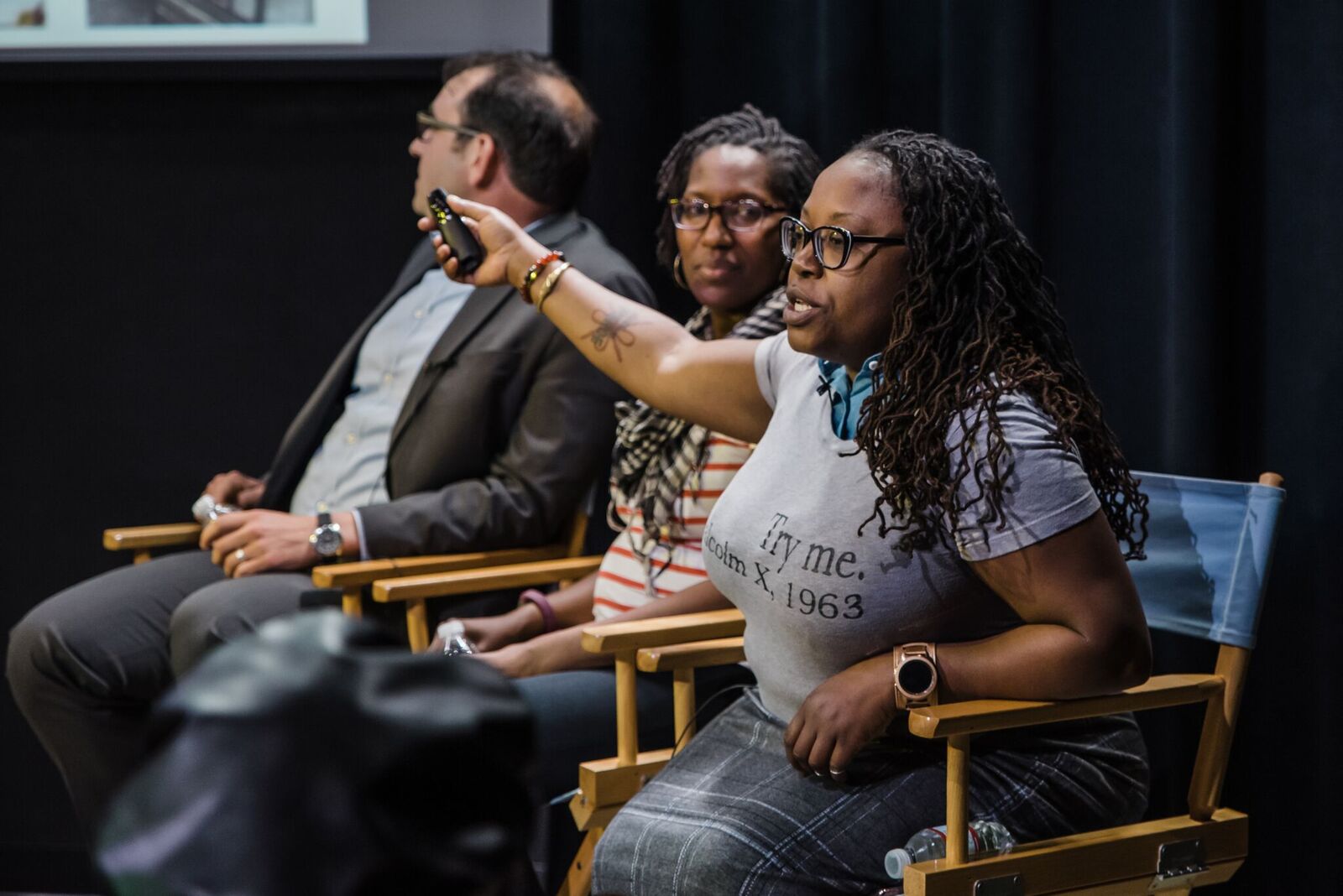We talk a lot about what makes urban public spaces vibrant — but what makes them just?
This was the question for our City Lobby conversation on April 16, 2019 at PhillyCAM, where Philadelphians gathered for an interactive dialogue led by Erica D. Atwood, Veronica O. Davis and Andrew Stober, advisors to the Just Spaces Initiative in Philadelphia.
Watch the video livestream of their presentation here:
JUST SPACES FRAMEWORK:
When Stober joined University City District over three years ago, they started thinking about public space and collecting data around equity.
“What felt clear to me was that no one really knew what they talked about when they talked about equity in public space.”
They had data on users, but what they didn't have was non-users. “Who is absent from public spaces, and why aren’t they here?”
To analyze this question, the Just Spaces Initiative, led by a large advisory committee, started with three axes of justice conceptualized by anthropologist Setha M. Low, director of the Public Space Research Group at the City University of New York:
Distributional Justice — Who has physical proximity to space assets?
Procedural Justice — Who is listened to and how are they listened to in the planning, design and operations of a public space?
Interactional Justice — What makes people feel welcome or unwanted in a public space?
Plus two additional elements:
Representation — What does it mean to see yourself and your history in a space?
Ethic of Care — How do people care for each other and the space that they’re in?
DEFINING JUSTICE:
To illustrate the difference between equality, equity & justice, Davis shared three images:
Equality shows everyone getting the same size box to peer over the fence
Equity shows everyone getting the size box they need to see over the fence
Justice asks: Why is there a fence?
“The idea of justice is: Break the whole fence down,” said Davis. “Why are we fighting to see over the fence, when there shouldn’t be a fence in the first place? This is where we’re coming from—let’s remove the fence in order to have more just public spaces.”
Added Stober: “Often one of the problems is that we don’t even see the fence.”
“What’s really interesting,” said Davis, “is when you start having conversations about equity, everyone agrees: ‘Yes, everyone should have what they need.’ But the minute you put money on the table, then it’s like ‘Welll, maybe they can have some of what they need,’ and the other stuff goes away…”
Interactional Justice:
“What makes you feel welcome and gives you a sense of belonging in a space?”
—Erica D. Atwood
“One of the biggest fears in a rapidly changing city is cultural erasure—what was once familiar to me is no longer there.”
—Veronica O. Davis
Some examples of what could make you feel unwanted or unwelcome in public space:
How far do I have to walk around a fence to get in?
Where is the closest bathroom?
How is the space policed?
How much do I have to pay for ice cream?
Speaking of ice cream—when monetizing spaces with concession sales, park operators must be transparent. Dilworth Park, for example, offers tremendous public programming. Revenue is needed to produce this, the costs must be made more transparent to the community. On the other hand, could vendors also consider: if you’re selling ice cream for $5, could you also offer something for $1?
PROCEDURAL JUSTICE:
“People get so caught up in the design of public space, that they don't think about the people who will use them.”
—Veronica O. Davis
“It’s important for whomever is designing a park, to really be working with the community,” said Davis. For design and planning professionals, “It’s about going to where people are, while they’re doing the thing they’re already doing, engaging them in the process, and designing space that can be flexible for multiple users.”
“It’s also about being very deliberate about whose voices are being amplified in a discussion,” added Stober. “Especially voices that aren’t showing up through traditional means of public engagement.”
ETHIC OF CARE:
“Public space can serve as a refuge from society’s ills, it can also serve as reflection of those very same ills. You often see that expressed in how people are cared for.”
—ANDREW STOBER
People — How do we care for people using public space who are the most marginalized?
Maintenance — How does the party responsible for maintaining a space (municipal or other) maintain it or not, and what message does this send to people who are using the space? How can this be interpreted differently by people from different backgrounds?
Volunteerism — How do people step up for events like “Love Your Park Day” to take care of spaces in an informal or organized way?
On the issue of maintenance, Stober shared an example:
When a public water fountain in the city was shut down, local focus groups interpreted it differently. People of color read it as discouraging use of the space, while white residents assumed it was because the city didn’t have budget to maintain many public amenities, not just this one.
“Neither is the specific reason why that water fountain isn’t working,” said Stober, “but they both speak to systematic reasons” for disinvestment and disparity in public space.
REPRESENTATION:
“The only two public statues of women in Philadelphia are martyrs— and they’re white martyrs. What does that say?”
—Erica D. Atwood
AUDIENCE QUESTION:
“What about large public spaces that serve an entire city or region? How do you keep space flexible for users from everywhere?”
Davis shared the National Mall in Washington D.C. as an example. “It is just grass. But if you go there any day of the week, it is always full of people.”
“How do you have this space that is for the world, but is also where locals go to toss a frisbee or fly a kite? It’s because it’s literally nothing, and everyone can make it whatever they want. You take your corner, and you define your space for the time that you’re there.”
Comparing parks in America and Europe, Atwood added: “There is not enough opportunity for adults to play in parks. In thinking about your space, think about how you remove restrictions and allow opportunity for grown folk and children and everyone to have an equitable space to play.”
“We’re so worried about liability and safety,” added Atwood. “What’s more important is to have a space that is open and dynamic and available to everyone.”
WARMUP EXERCISE:
To get the conversation started, guests were asked to share their favorite public spaces growing up:
“I spent most of my time on the city sidewalks, and we congregated on a big hill in the neighborhood.”
“My space was the Mt. Airy playground. It was my first introduction to public spaces and the recreation department.”
“My public spaces were indoor spaces. I was from an immigrant family, so I went to the library and the public schools.”
BREAKOUT EXERCISE:
To put the Just Spaces framework into practice, guests were asked to consider three case studies from public spaces across the country:
Case 1: Don’t Mute DC (Washington, D.C.)
Case 2: Homeless Surge at San Francisco Airport (San Francisco, CA)
Case 3: Recreational Leagues vs. Pick-up Games (Washington, D.C.)
Discussion QUESTIONS:
What are the elements of justice that apply to your case?
Put yourself in the shoes of a policymaker, an operational manager or an advocate: How does the Just Spaces framework apply?
PARTING QUESTION:
What will you do to make public spaces more just in the next 10 minutes, 10 days, 1 year?
POWERPOINT
THANKS TO OUR PARTNERS:
City Lobby: Just Spaces was hosted by Urban Consulate at Philadelphia Community Access Media and made possible thanks to support from Knight Foundation and Bicycle Coalition of Greater Philadelphia. For future Consulate events, follow us on Facebook, Instagram & Twitter.
Photo Credit: Heather McBride Photography






















